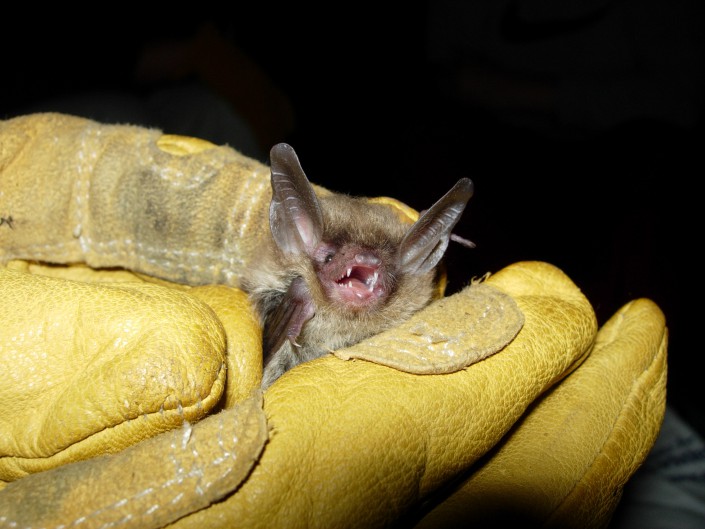Northern Long-Eared Bat Protected Under Endangered Species Act
The U.S. Fish and Wildlife Service Announced Bat as Threatened, Primarily Due to White-Nose Syndrome
By: Lindsay McNamara, Communications Coordinator

Remember back in late November when we wrote a blog encouraging our supporters to help the Northern Long-Eared Bat become listed as an Endangered Species? Thanks to those of you who submitted comments to the U.S. Fish and Wildlife Service, it was announced today that the Northern Long-Eared Bat will be listed as threatened and protected under the Endangered Species Act.
The U.S. Fish and Wildlife Service has cited declines caused by White-Nose Syndrome as well as continued spread of the disease, as the primary threat to the species. Under the protections of the Endangered Species Act, the Northern Long-Eared Bat now has increased priority for funds, grants, and recovery opportunities.
Also announced today, the U.S. Fish and Wildlife Service issued an interim 4(d) rule that will provide maximum protection to the Northern Long-Eared Bat in areas where their populations have drastically declined due to White-Nose Syndrome, but will limit regulatory burden on the public in parts of the country where the bat species is not affected by the disease and the populations are stable. The U.S. Fish and Wildlife Service invites the public to comment on this interim rule until July 1, 2015.
Learn more about the listing and 4(d) rule:
- U.S. Fish and Wildlife Service: Northern Long-Eared Bat Listing Press Release
- U.S. Fish and Wildlife Service: Northern Long-Eared Bat Fact Sheet
CWF Field Guide: learn more about the Northern Long-eared Bat
How Can You Help Protect Northern Long-Eared Bats?
- Do Not Disturb Hibernating Bats
- Leave Dead and Dying Trees Standing: Where possible and not a safety hazard, leave dead or dying trees on your property. Northern long-eared bats and many other animals use these trees.
- Install a Bat Box: Dead and dying trees are usually not left standing, so trees suitable for roosting may be in short supply and bat boxes can provide additional roost sites.
- Get involved with Conserve Wildlife Foundation’s Bat Project!
Lindsay McNamara is the Communications Coordinator for Conserve Wildlife Foundation of New Jersey.
Discover more from Conserve Wildlife Foundation of NJ
Subscribe to get the latest posts sent to your email.